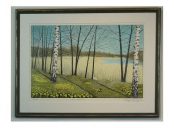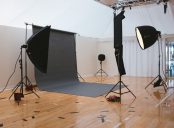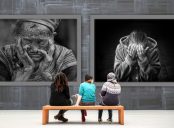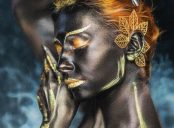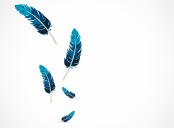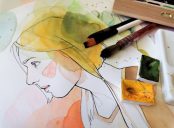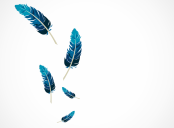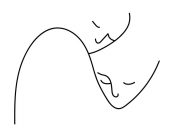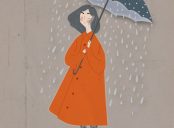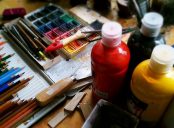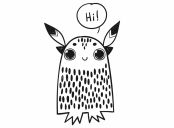Fashion Illustration: Unveiling the Artistic World of Fashion

Introduction:
Fashion illustration, a captivating art form that captures the essence of fashion through hand-drawn or computer-generated images, has long been revered as an integral aspect of the fashion industry. This article offers a comprehensive exploration of fashion illustration, its various types, popularity, quantitative measurements, distinguishing features, and a historical overview of the advantages and drawbacks associated with different styles.
I. A Thorough Overview of Fashion Illustration:

Fashion illustration serves as a visual communication tool that showcases the creativity and imagination of designers. By representing garments, hairstyles, and accessories, fashion illustrators bring life to a designer’s vision, captivating audiences and enabling them to visualize the final product even before it comes into existence. These artworks are often displayed in fashion magazines, advertising campaigns, and digital platforms, where they engage and inspire viewers.
II. The Comprehensive Presentation of Fashion Illustration:
a) Types of Fashion Illustration:
Fashion illustration encompasses various types, each with its unique style and method. The three primary types of fashion illustration include:
1. Classic fashion illustration: This style portrays figures with elongated limbs, showcasing elegance and sophistication. Classic fashion illustrations often utilize traditional artistic mediums such as watercolors, markers, and pencils, lending a nostalgic charm to the imagery.
2. Digital fashion illustration: With the advent of technology, digital fashion illustration has gained prominence. Utilizing software such as Adobe Illustrator, CorelDRAW, or Procreate, artists create precise and vibrant illustrations, seamlessly integrating digital aspects into their artworks.
3. Fashion collage illustration: This contemporary style incorporates elements of mixed media, utilizing collage techniques to create compelling and visually intriguing pieces. Artists incorporate fabrics, textures, and magazine cutouts to generate unique and experimental illustrations.
b) Popularity of Fashion Illustration:
Fashion illustration has experienced a resurgence in popularity in recent years, primarily due to social media platforms such as Instagram and Pinterest. This digital advancement allows fashion illustrators to showcase their talent to a global audience, fostering collaborations with renowned brands and emerging designers. Additionally, fashion illustration has captivated the general public, with individuals seeking personalized fashion illustrations for events, gifts, or as personal keepsakes.
III. Quantitative Measurements of Fashion Illustration:
Quantifying the impact and reach of fashion illustration entails analyzing several key metrics:
a) Online Visibility: By tracking the number of social media followers, likes, shares, and comments, fashion illustrators can gauge their online influence and engagement levels.
b) Collaborations and Partnerships: The number of collaborations with fashion brands and publications serves as a quantitative indicator of an illustrator’s professional success and recognition within the industry.
c) Auction Prices: In the art market, auction prices can reflect the desirability and value of fashion illustrations. Notable illustrations that fetch high prices at auctions signify their collectible nature and artistic significance.
IV. Distinguishing Features of Different Fashion Illustration Styles:
Fashion illustrations exhibit distinct characteristics, offering viewers a glimpse into the artist’s style and creative vision. Here are some notable distinguishing features:
a) Classic fashion illustrations often emphasize long, fluid lines, creating an elegant and graceful aesthetic.
b) Digital fashion illustrations showcase razor-sharp details, vibrant colors, and precise rendering, harnessing the advantages of digital mediums.
c) Fashion collage illustrations embrace an experimental approach, incorporating diverse materials and textures to construct visually dynamic and unconventional artworks.
V. Historical Overview of Advantages and Drawbacks of Fashion Illustration:
Throughout history, fashion illustration has undergone transformations and faced various advantages and drawbacks.
Advantages:
– Timelessness: Fashion illustrations can capture the essence of a garment’s design and appeal, transcending time and trends.
– Artistic Expression: Fashion illustrations provide artists with the freedom to experiment, pushing boundaries and exploring unique artistic styles.
– Visualization: Compared to photography, fashion illustration allows designers to present their vision more creatively and imaginatively.
Drawbacks:
– Limited Representation: Fashion illustration may not accurately represent aspects such as fabric drape, texture, or movement that can be effectively captured through photography.
– Accessibility: Historically, fashion illustration was limited to elite fashion publications, resulting in a lack of diversity and inclusivity.
– Time Constraints: Traditional fashion illustrations could be time-consuming, often delaying the creative and production process.
Conclusion: Celebrating the Artistry of Fashion Illustration
Fashion illustration serves as a visual testament to the imagination, creativity, and skill of artists within the fashion industry. With its diverse styles, popularity in the digital age, and the ability to transcend time, fashion illustration continues to captivate and inspire viewers. Whether rendered traditionally or digitally, fashion illustrations offer a window into the artistry behind fashion, showcasing the power of visual storytelling in the ever-evolving world of style.
References
– [Insert relevant references here]

